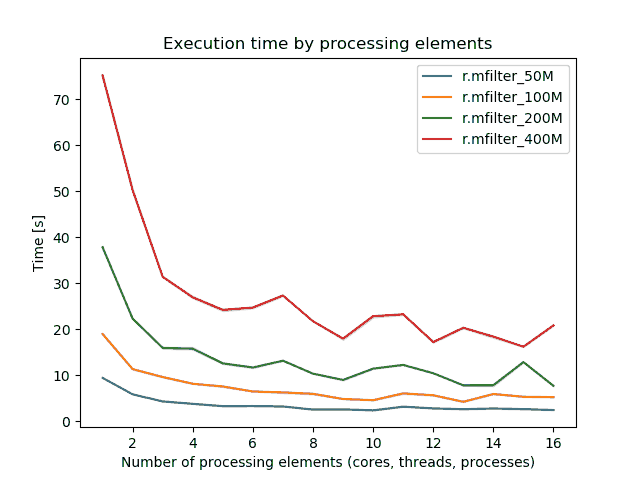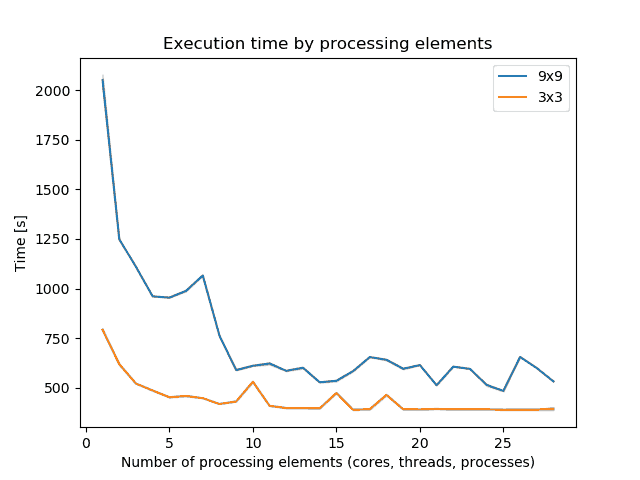r.mfilter
Performs raster map matrix filter.
r.mfilter [-z] input=name output=name filter=name [repeat=integer] [title=string] [nprocs=integer] [--overwrite] [--verbose] [--quiet] [--qq] [--ui]
Example:
r.mfilter input=name output=name filter=name
grass.script.run_command("r.mfilter", input, output, filter, repeat=1, title=None, nprocs=0, flags=None, overwrite=None, verbose=None, quiet=None, superquiet=None)
Example:
gs.run_command("r.mfilter", input="name", output="name", filter="name")
grass.tools.Tools.r_mfilter(input, output, filter, repeat=1, title=None, nprocs=0, flags=None, overwrite=None, verbose=None, quiet=None, superquiet=None)
Example:
tools = Tools()
tools.r_mfilter(input="name", output="name", filter="name")
This grass.tools API is experimental in version 8.5 and expected to be stable in version 8.6.
Parameters
input=name [required]
Name of input raster map
output=name [required]
Name for output raster map
filter=name [required]
Path to filter file
repeat=integer
Number of times to repeat the filter
Default: 1
title=string
Output raster map title
nprocs=integer
Number of threads for parallel computing
0: use OpenMP default; >0: use nprocs; <0: use MAX-nprocs
Default: 0
-z
Apply filter only to null data values
--overwrite
Allow output files to overwrite existing files
--help
Print usage summary
--verbose
Verbose module output
--quiet
Quiet module output
--qq
Very quiet module output
--ui
Force launching GUI dialog
input : str, required
Name of input raster map
Used as: input, raster, name
output : str, required
Name for output raster map
Used as: output, raster, name
filter : str, required
Path to filter file
Used as: input, file, name
repeat : int, optional
Number of times to repeat the filter
Default: 1
title : str, optional
Output raster map title
nprocs : int, optional
Number of threads for parallel computing
0: use OpenMP default; >0: use nprocs; <0: use MAX-nprocs
Default: 0
flags : str, optional
Allowed values: z
z
Apply filter only to null data values
overwrite : bool, optional
Allow output files to overwrite existing files
Default: None
verbose : bool, optional
Verbose module output
Default: None
quiet : bool, optional
Quiet module output
Default: None
superquiet : bool, optional
Very quiet module output
Default: None
input : str | np.ndarray, required
Name of input raster map
Used as: input, raster, name
output : str | type(np.ndarray) | type(np.array) | type(gs.array.array), required
Name for output raster map
Used as: output, raster, name
filter : str | io.StringIO, required
Path to filter file
Used as: input, file, name
repeat : int, optional
Number of times to repeat the filter
Default: 1
title : str, optional
Output raster map title
nprocs : int, optional
Number of threads for parallel computing
0: use OpenMP default; >0: use nprocs; <0: use MAX-nprocs
Default: 0
flags : str, optional
Allowed values: z
z
Apply filter only to null data values
overwrite : bool, optional
Allow output files to overwrite existing files
Default: None
verbose : bool, optional
Verbose module output
Default: None
quiet : bool, optional
Quiet module output
Default: None
superquiet : bool, optional
Very quiet module output
Default: None
Returns:
result : grass.tools.support.ToolResult | np.ndarray | tuple[np.ndarray] | None
If the tool produces text as standard output, a ToolResult object will be returned. Otherwise, None will be returned. If an array type (e.g., np.ndarray) is used for one of the raster outputs, the result will be an array and will have the shape corresponding to the computational region. If an array type is used for more than one raster output, the result will be a tuple of arrays.
Raises:
grass.tools.ToolError: When the tool ended with an error.
DESCRIPTION
r.mfilter filters the raster input to produce the raster output according to the matrix filter designed by the user (see FILTERS below).

Figure: Illustration for a custom 3x3 filter
The filter is applied repeat times (default value is 1). The output raster map layer can be given a TITLE if desired. (This TITLE should be put in quotes if it contains more than one word.)
With -z flag the filter is applied only to null values in the input raster map layer. The non-null category values are not changed. Note that if there is more than one filter step, this rule is applied to the intermediate raster map layer -- only null category values which result from the first filter will be changed. In most cases this will NOT be the desired result. Hence -z should be used only with single step filters.
The filter parameter defines the name of an existing, user-created UNIX ASCII file whose contents is a matrix defining the way in which the input file will be filtered. The format of this file is described below, under FILTERS.
The repeat parameter defines the number of times the filter is to be applied to the input data.
FILTERS
The filter file is a normal UNIX ASCII file designed by the user. It has the following format:
TITLE TITLE
MATRIX n
.
n lines of n values
.
DIVISOR d
TYPE S/P
TITLE
A one-line TITLE for the filter. If a TITLE was not specified on the
command line, it can be specified here. This TITLE would be used to
construct a TITLE for the resulting raster map layer. It should be a
one-line description of the filter.
MATRIX
The matrix (n x n) follows on the next n lines. n must be an odd
integer greater than or equal to 3. The matrix itself consists of n rows
of n values. The values must be separated from each other by at least 1
blank.
DIVISOR
The filter divisor is d. If not specified, the default is 1. If the
divisor is zero (0), then the divisor is dependent on the category
values in the neighborhood (see HOW THE FILTER WORKS below).
TYPE
The filter type. S means sequential, while P mean parallel. If not
specified, the default is S.
Sequential filtering happens in place. As the filter is applied to the raster map layer, the category values that were changed in neighboring cells affect the resulting category value of the current cell being filtered.
Parallel filtering happens in such a way that the original raster map layer category values are used to produce the new category value.
More than one filter may be specified in the filter file. The additional filter(s) are described just like the first. For example, the following describes two filters:
EXAMPLE FILTER FILE
TITLE 3x3 average, non-null data only, followed by 5x5 average
MATRIX 3
1 1 1
1 1 1
1 1 1
DIVISOR 0
TYPE P
MATRIX 5
1 1 1 1 1
1 1 1 1 1
1 1 1 1 1
1 1 1 1 1
1 1 1 1 1
DIVISOR 25
TYPE P
HOW THE FILTER WORKS
The filter process produces a new category value for each cell in the input raster map layer by multiplying the category values of the cells in the n x n neighborhood around the center cell by the corresponding matrix value and adding them together. If a divisor is specified, the sum is divided by this divisor. (If a zero divisor was specified, then the divisor is computed for each cell as the sum of the MATRIX values where the corresponding input cell is non-null.)
If more than one filter step is specified, either because the repeat value was greater than one or because the filter file contained more than one matrix, these steps are performed sequentially. This means that first one filter is applied to the entire input raster map layer to produce an intermediate result; then the next filter is applied to the intermediate result to produce another intermediate result; and so on, until the final filter is applied. Then the output cell is written.
PERFORMANCE
By specifying the number of parallel processes with nprocs option, r.mfilter can run significantly faster, see benchmarks below.


Figure: Benchmark on the left shows execution time for different number
of cells for 9x9 matrix, benchmark on the right shows execution time for
16 billion cells for different matrix sizes. (Intel Core i9-10940X CPU @
3.30GHz x 28)
Note that parallelization is implemented only for the parallel filter, not the sequential one. To take advantage of the parallelization, GRASS needs to compiled with OpenMP enabled.
NOTES
If the resolution of the geographic region does not agree with the resolution of the raster map layer, unintended resampling of the original data may occur. The user should be sure that the geographic region is set properly.
SEE ALSO
g.region, r.clump,
r.neighbors, r.resamp.filter,
Raster Parallelization with
OpenMP
AUTHORS
Glynn Clements. Based upon r.mfilter, by Michael Shapiro, U.S.Army
Construction Engineering Research Laboratory.
Aaron Saw Min Sern (OpenMP support).
SOURCE CODE
Available at: r.mfilter source code
(history)
Latest change: Sunday Nov 09 19:22:25 2025 in commit 7335bd5